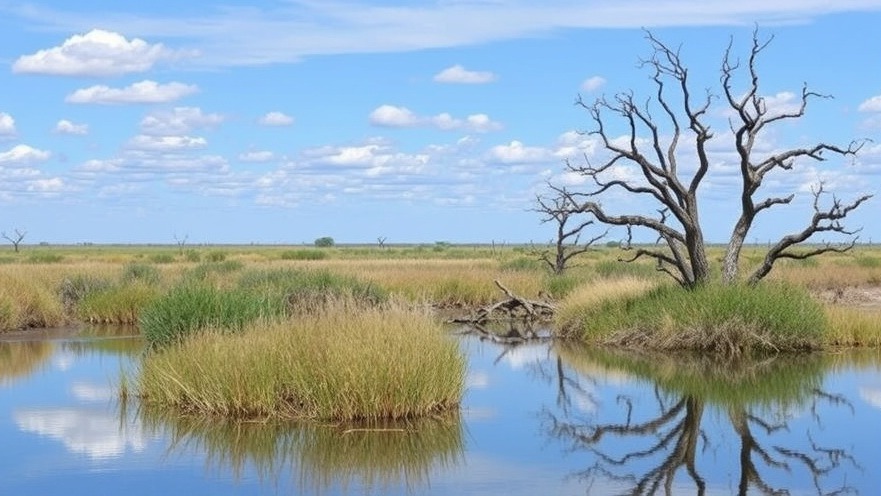
The Stalled Expansion of Texas' Iconic Wildlife Refuge
In an unexpected turn, plans to significantly expand the Muleshoe National Wildlife Refuge in Texas, the state's oldest wildlife sanctuary, have been halted by the Trump administration. Initially intended to bolster approximately 700,000 acres in conservation efforts, this project aimed to protect essential habitats for migratory birds and other wildlife. Established by Franklin D. Roosevelt in 1935, the refuge stands as a crucial part of the ecological framework in the Texas High Plains region, which is known for its rich biodiversity.
The Importance of Conservation in the Texas High Plains
The original expansion plan was part of the Biden administration's “America the Beautiful” initiative, which focuses on restoring America’s landscapes that provide sanctuaries for wildlife. Critics of the abandonment argue that conserving the Muleshoe Refuge is vital for species like the sandhill crane and lesser prairie-chicken, both of which rely on robust ecosystems to survive. The lesser prairie-chicken, in particular, is facing an alarming decline, with populations plummeting by 90% since the 1960s, culminating in its endangered status in recent years. While the Trump administration touts its agenda of reducing regulations and promoting energy independence, conservationists warn that these policies compromise the delicate balance of nature needed to sustain wildlife.
Political Perspectives: Land Acquisition or Land Grab?
Opposition to the expansion expressed by local representatives, including U.S. Reps. Jodey Arrington and Ronny Jackson, framed the acquisition as a “land grab,” igniting a contentious debate about land ownership and conservation priorities. The U.S. Fish and Wildlife Service had indicated that their approach was voluntary and aimed at negotiating with willing sellers, ensuring that local stakeholders had a vote in the process. Contrarily, the withdrawal of the acquisition plan raises questions about who ultimately has the right to decide the fate of wildlife conservation in Texas.
Can Conservation Efforts Continue?
Despite the setback, advocates like Mike Leahy from the National Wildlife Federation remain hopeful that conservation efforts will not be entirely abandoned. “This is certainly a setback,” he said, emphasizing that over a decade of careful planning went into the original initiative. Moving forward, there may still be opportunities for local communities and conservationists to collaborate on future projects to protect wildlife in the area. Such collaborative efforts will be key in reversing the momentum against environmental policies in Texas.
What’s Next for Wildlife in Texas?
The cancellation of the expansion plan introduces uncertainty for future wildlife management initiatives. Conservationists will need to strategize alternative approaches to safeguard habitat in light of decreased federal support. This change underscores the ongoing struggle in balancing economic interests with ecological responsibilities, highlighting the need for a comprehensive dialogue among policymakers, local communities, and conservationists.
Why Supporting Local Wildlife Matters
Preserving natural habitats and supporting wildlife populations is not merely about saving species; it directly affects agriculture, tourism, and the health of the ecosystem as a whole. A thriving wildlife network contributes to the overall resilience of our environment. Residents of Texas—and the wider community—should remain informed and engaged in local conservation efforts to foster a sustainable future for both humans and wildlife.
Engagement in local conservation initiatives and open discussions with representatives can amplify the community’s voice regarding wildlife protections. Now more than ever, it’s essential to recognize the interconnectedness of our actions and their impacts on the ecosystems and wildlife we cherish. Join local organizations or participate in community events focused on conservation to ensure that the future of Texas wildlife remains bright.
 Add Element
Add Element  Add Row
Add Row 



Write A Comment